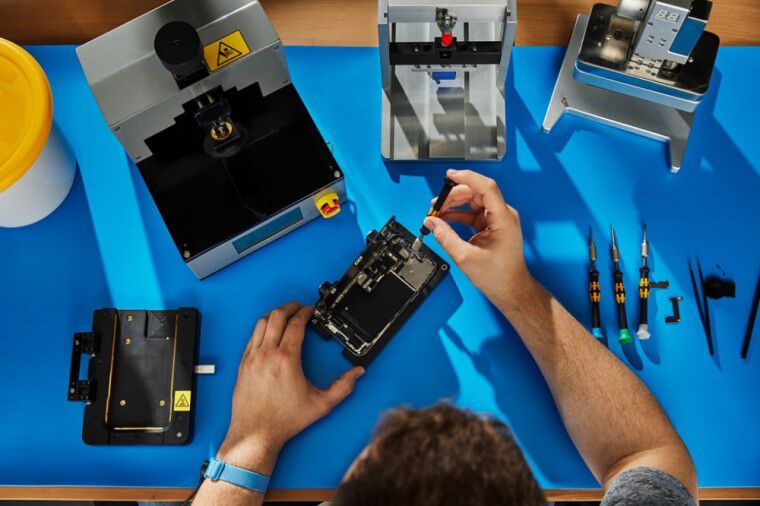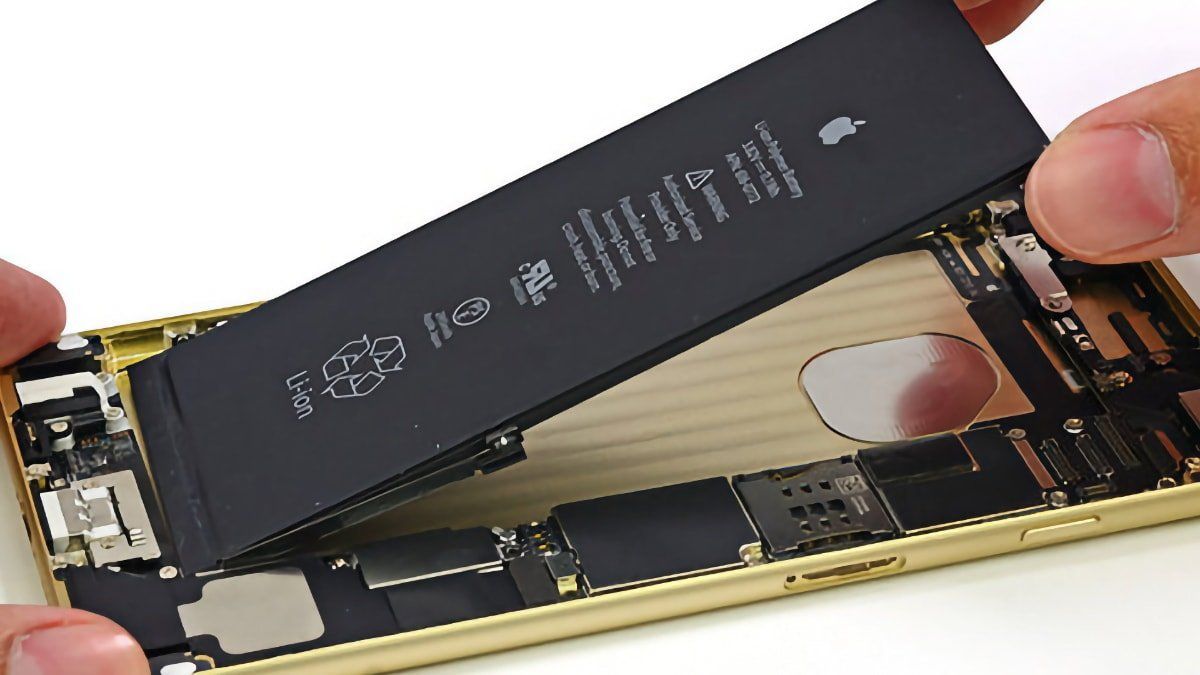- Apple developing electric jolt technology for easy iPhone battery removal.
- New method called “electrically induced adhesive debonding.”
- Complies with EU’s 2027 Batteries Regulation for easier battery replacements.
- Potential for broader impact in aerospace and electronics industries.
Apple is allegedly working on a new, revolutionary way of bungling and removing iPhone batteries.
gone could be these days of fighting with sticky glue and risking damage to the fragile components.
According to The Information, instead, we could soon see a system using an electric jolt to free batteries for easy replacement.
Apple’s New Battery Tech

Apple rather sneakily calls the proposed technology “electrically induced adhesive debonding”.
It’s based upon some clever engineering. In essence, if you wrapped the metal up around the batteries instead of around the foil, then at battery replacement time, a small electrical current would break the battery free from its moorings.
This will turn out to make a great difference for professional repair shops since, as it stands today, swapping out an iPhone battery can turn into something of a quest.
On some 2020 models, it can take up to four hours to disassemble the phone, clean up any liquid damage, and reapply adhesive.
Why the Change of Heart for Apple?

Apple is hardly famous for its gadget repairability. So why this newfound passion for user-friendly battery swapping? Two words: European Union.
The European Union has decided to start doing something about it and is pretty much walking the walk toward more sustainable electronics.
Last year they released the Batteries Regulation, with quite strict rules in it.
Starting from 2027, consumers at any point in that device’s lifespan should be able to remove and replace a battery within their gadget.
There’s also an environmental message: tackling the growing mountain of electronic waste.
The EU wants to see higher recycling rates and more use of recycled materials in batteries.
It’s a noble goal, and one that’s forcing tech giants like Apple to rethink their design philosophy.
The Science Behind the Spark

Now time to get a bit technical, for this “electrically induced adhesive debonding” is to be built on some pretty spiffy materials science.
The trick is to add some ionic components, dissolved salts, or even ionic liquids into the adhesive mix.
That gets the glue to be responsive to electrical stimulation.
When a voltage is applied across the surfaces, this actually triggers the debonding process.

The new technique has several key advantages over other methods in practice.
It is more accurate than heat-based removal, thereby reducing the risk of damaging other components.
A Broader Impact

But the effects of the new technology could be very wide-ranging: the aerospace and electronics industries are already looking at similar adhesives in their own applications.
Just imagine: it will be possible to quickly and safely peel off delicate parts from circuit boards, or it will be much easier to dismantle some complex structures inside an aircraft for maintenance.
All sorts of possible uses abound, and Apple’s adoption could spur development in several sectors.
Looking Ahead

It’s important to note that this technology is still in the research phase. We don’t know when (or even if) we’ll see it in actual iPhones.
But the very fact that Apple contemplates this path means the company is changing their attitude toward repairability.
For now, iPhone owners can at least daydream about a time when replacing a battery won’t require shaking hands and nerves of steel.
And who knows? Maybe this small innovative spark from Apple is all that is needed for more sustainable and serviceable designs in the tech world in its entirety.
FAQs
What is “electrically induced adhesive debonding”?
Electrically induced adhesive debonding is a new technology Apple is working on that uses an electric jolt to release iPhone batteries, making them easier to replace.
How will this new battery technology benefit repair shops?
The new technology will simplify the battery replacement process, reducing the time and effort required to remove old batteries and minimizing the risk of damage to other components.
Why is Apple changing its approach to iPhone battery replacement?
Apple is likely responding to the European Union’s Batteries Regulation, which mandates user-friendly battery replacements and higher recycling rates for electronic devices by 2027.
What are the technical details behind Apple’s new battery technology?
The technology involves adding ionic components to adhesives, making them responsive to electrical stimulation. When voltage is applied, the adhesive debonds, allowing for easier battery removal.
When will Apple’s new battery technology be available in iPhones?
The technology is still in the research phase, and it’s uncertain when or if it will be implemented in actual iPhones. However, its development indicates Apple’s shift toward improving device repairability.
Also Read: iPhone 16 Series Rumoured Battery Capacities Revealed Signalling A Potential Shift in Longevity
Also Read: iPhone 16 Series Rumours: 3 New Design Overhauls and New Features
Also Read: iOS 18 and iPadOS 18 Compatible Device List Leaked: What Devices Make the Cut?
Also Read: Apple Enhances iOS with Advanced Earthquake Early Warning System
